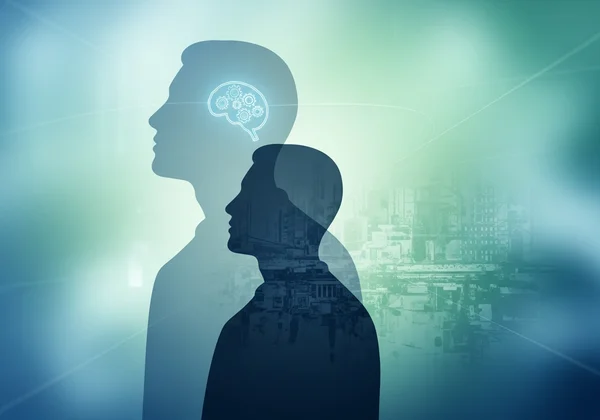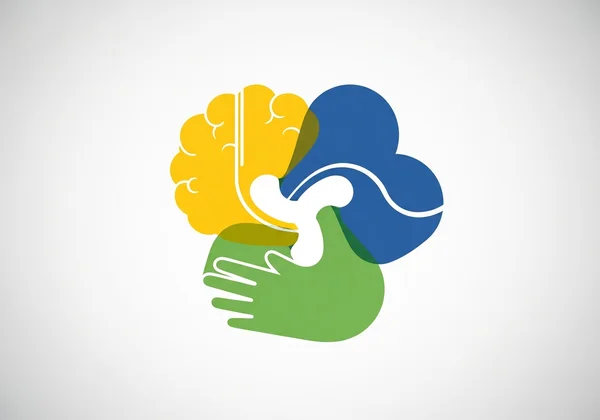The 3 Types of Empathy: Cognitive, Emotional, & Compassionate (An Empathy Test Guide)
Have you ever wondered why you can understand someone's point of view perfectly yet not feel their pain? Or why you sometimes feel overwhelmed by another person's sadness? The answer lies in the multifaceted nature of empathy. It isn't a single feeling but a complex skill set composed of distinct parts. Understanding these components is the first step toward mastering your emotional intelligence and building deeper, more meaningful connections. So, what are the 3 types of empathy and how do they shape your interactions every day?
This guide will demystify the core components of empathy. By exploring cognitive, emotional, and compassionate empathy, you'll gain a powerful framework for self-reflection and growth. If you're ready to see how your own empathy profile balances these elements, you can always discover your score on our comprehensive platform.
Understanding the Mind: What is Cognitive Empathy?
Cognitive empathy is often described as "perspective-taking." It's the intellectual ability to understand another person's emotional state and thoughts without necessarily sharing their feelings. Think of it as the "head" of empathy. It allows you to step into someone else's shoes and see the world from their vantage point, making it a crucial skill in communication, negotiation, and leadership.

The Science Behind Perspective-Taking and Mentalizing
At its core, cognitive empathy involves a psychological process known as "mentalizing" or "theory of mind." This is our capacity to infer the beliefs, desires, and intentions of others. Neurologically, this ability is linked to the prefrontal cortex, the part of the brain responsible for complex thought and decision-making. When you accurately guess what a friend is thinking or anticipate a colleague's reaction to news, you are actively using cognitive empathy. It’s an analytical skill that helps you navigate social landscapes effectively.
How Cognitive Empathy Manifests in Daily Life
You use cognitive empathy more often than you think. A manager uses it to deliver constructive feedback in a way their employee will be receptive to. A salesperson uses it to understand a client's needs and address their pain points. Even something as simple as choosing the right birthday gift for a loved one requires you to think about their personality, preferences, and desires—a clear exercise in cognitive empathy. It is the foundation for effective communication and conflict resolution.
Feeling with Others: Exploring Emotional Empathy
If cognitive empathy is the "head," then emotional empathy is the "heart." This is the type most people think of when they hear the word empathy. It is the ability to feel with another person, to share in their emotional experience. When you see a friend cry and you feel a pang of sadness yourself, or when you watch an exciting movie and feel the protagonist's joy, you are experiencing emotional empathy.

The Power and Pitfalls of Emotional Contagion
Emotional empathy often works through a phenomenon called emotional contagion. This is the tendency to "catch" emotions from others, much like a yawn can spread through a room. This shared feeling builds deep bonds and fosters a powerful sense of connection and intimacy. It’s what makes us feel truly understood and supported. However, it also has a downside. Without proper boundaries, it can lead to emotional exhaustion or burnout, especially for those in caregiving professions.
When Emotional Empathy Becomes Overwhelming: Hyper-Empathy
For some individuals, emotional empathy can be so intense that it becomes a burden. This state, often called hyper-empathy, involves absorbing the emotions of others to an overwhelming degree. People experiencing this may struggle to distinguish their own feelings from those around them, leading to anxiety and emotional fatigue. Learning to manage this intense connection is key to harnessing its power without being consumed by it. Curious about your own emotional sensitivity? An empathy quotient test can provide valuable insights.
Beyond Feeling: The Essence of Compassionate Empathy
Compassionate empathy is where the head and heart come together to inspire action. It goes beyond simply understanding or feeling another person's situation; it involves being moved to help. This is the most active form of empathy, translating feelings of concern into tangible support. It’s not just feeling bad for someone; it’s being motivated to do something about it.

From Sympathy to Action: The Drive to Help Others
While often confused with sympathy (feeling sorry for someone), compassionate empathy is different. Sympathy creates distance, whereas compassionate empathy builds a bridge. It’s the friend who not only listens to your problems but also helps you brainstorm solutions or brings you a warm meal. It is the motivating force behind altruism, from small acts of kindness to large-scale humanitarian efforts. This type of empathy transforms passive understanding into a force for positive change.
Cultivating Compassionate Empathy for Global Impact
On a larger scale, cultivating compassionate empathy is essential for addressing societal challenges. It drives people to volunteer, donate to causes they care about, and advocate for justice. When we understand others' perspectives (cognitive) and share in their struggles (emotional), we are naturally moved to act (compassionate). This complete form of empathy is what empowers us to build more caring and supportive communities.
Cognitive vs. Emotional Empathy: A Critical Comparison
Understanding the distinction between cognitive and emotional empathy is crucial for developing a well-rounded emotional intelligence. They are two sides of the same coin, and one without the other can lead to imbalanced interactions. A person high in cognitive but low in emotional empathy might come across as cold and calculating, while someone with high emotional but low cognitive empathy might be easily overwhelmed and ineffective at providing practical help.
Key Differences in Brain Activity and Social Interaction
Neuroscience shows that these two types of empathy activate different parts of the brain. Cognitive empathy engages the prefrontal cortex, while emotional empathy activates the limbic system, particularly the insula and amygdala, which are our emotional centers. In social interactions, this means someone might intellectually grasp your problem but fail to offer emotional comfort, or vice-versa.
Why You Need Both: The Symbiotic Relationship
The most effective and healthy form of empathy involves a seamless blend of both. Cognitive empathy provides the understanding needed to contextualize a situation, while emotional empathy provides the authentic connection. Together, they create the foundation for compassionate empathy. By integrating both, you can offer support that is both emotionally resonant and practically useful. You can test your empathy to see where your strengths lie.
The Synergy of Empathy: Why a Balance of All Three Types Matters
True emotional mastery isn't about excelling in just one type of empathy; it's about developing a healthy balance of all three. This synergy allows you to connect deeply with others, protect your own well-being, and act effectively when needed. A balanced empathy profile is a powerful asset in every area of your life.

Empathy in Relationships: Strengthening Bonds and Resolving Conflict
In personal relationships, a balance is key. Cognitive empathy helps you understand your partner's perspective during a disagreement. Emotional empathy allows you to share in their joy and support them through their sorrow. Compassionate empathy motivates you to take actions that strengthen the bond, like apologizing first or performing a thoughtful gesture. This holistic approach builds trust, intimacy, and resilience.
Professional Success: Empathy as a Leadership Superpower
In the workplace, balanced empathy is the hallmark of a great leader. Managers need cognitive empathy to understand their team's motivations, emotional empathy to foster a supportive and trusting environment, and compassionate empathy to make decisions that benefit both the employees and the organization. It's a critical skill for team cohesion, innovation, and overall success. Find out where you stand by taking a free empathy test today.
Master Your Empathy: Deepen Connections and Drive Growth
Understanding the three types of empathy—cognitive, emotional, and compassionate—is more than just an academic exercise. It is the key to unlocking a deeper understanding of yourself and others. By recognizing how these elements work within you, you can intentionally cultivate a more balanced and effective empathetic response.
Ready to begin your journey of self-discovery? The first step is to establish a baseline. Our comprehensive Empathy Test is designed to help you discover your unique empathy score and provide personalized insights for growth. Start today and transform the way you connect with the world.
Frequently Asked Questions About the Types of Empathy
What is the core difference between cognitive and emotional empathy?
The core difference lies in "thinking" versus "feeling." Cognitive empathy is the intellectual ability to understand someone's perspective without feeling their emotions. Emotional empathy is the capacity to actually feel what another person is feeling, creating a shared emotional experience.
Can compassionate empathy be learned or developed over time?
Absolutely. Compassionate empathy is a skill, not a fixed trait. It can be developed through mindful practices, such as active listening, volunteering, and consciously choosing to act on your empathetic feelings. The insights from an online empathy test can provide a clear roadmap for areas to focus on.
Do all people possess all three types of empathy equally?
No, most people have a natural inclination toward one or two types. Some are excellent perspective-takers but struggle with emotional connection, while others are highly emotional but find it difficult to move to action. The goal is not perfect equality but a healthy, functional balance.
Why is it important to understand the different types of empathy?
Understanding the different types helps you identify your own strengths and weaknesses. This awareness allows you to build richer relationships, become a more effective communicator and leader, and protect yourself from emotional burnout. It empowers you to navigate social situations with greater skill and intention.